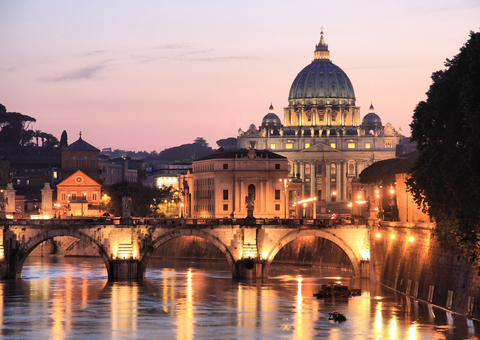To Rome with Love, Woody Allen´s latest film, has perhaps not received many positive reviews, but thanks to it the lights focusing on Rome have been switched on once again. Actually, many have defined it as a campaign to promote tourism rather than a work of a film great. However, nobody can deny that the beauty of the Eternal City, no matter how advertised it was in the film, still takes one´s breath away.

One of the bitterest reviews has come from one of the main Italian film personalities, Carlo Verdone. The Roman actor and director didn´t like Allen´s representation of Rome too much. According to him, the portrayal of the city does not correspond exactly with reality. His remarks do not refer to the beauty of Rome, which is a given, but to the everyday life of the city. “It´s a Rome seen through the eyes of the Americans, who when they come here they expect to find it just like that: pleasant people, a bit coarse, monuments and good food… Rome in fact is a city with many problems […]”, referring to the city chaos in all of its aspects: double and triple-line parking, loud noises, public and historical places not cared for enough, etc.
Perhaps its charm also derives from its untidiness and carelessness, or perhaps he´s looking for an excuse to not see the real problem (which, as an Italian citizen, I know that it exists). However, I´m not here to bore you with a socio-cultural analysis of Rome or a tedious review of To Rome with Love, don´t worry. I´ll talk about the beauty in the film… which is precisely Rome and its corners, its fountains, its squares, its streets, its light and its colour… everything that makes it magical.
Many of the film´s scenes have been shot outside the tourist locations that we know, in other words, the Colosseum, the Imperial Forum, Piazza Venezia, Piazza di Spagna or Piazza dei Popolo. And so, in the images we can see places such as:
Garbatella district: It emerged in 1920 as a popular district to house the industrial workers of that area (Ostiense), and which began to be built taking the English model of the Garden City as a reference, so most houses and small villas have a green space so that its inhabitants could have their own little garden. This district´s style was labelled barochetto, due to its similitude with the baroque architectonical style: animal figures, wide use of floral and botanical shapes, etc.
Auditorium Parco della Musica: It´s the biggest ´temple´ in Europe dedicated to music, built by the architect Renzo Piano in 1995. It´s located on the outskirts of the capital, between the banks of the river Tiber, next to the Ponte Duca D´Aosta, the Parioli hill and the Villa Olimpica. Today, it´s the most visited musical auditorium in the world, so a visit here is a must.
Piazza Mattei: In the heart of the Sant´Angelo district, located on the left bank of the Tiber river facing the Isola Tiberina, the Tiber Island, this small square holds the Fontana delle Tartarughe, the Tortoise Fountain, which according to popular belief was built in one night so that the Duke of Mattei (one of the most powerful families of the end of the 14th century) could surprise his future father-in-law who didn´t want to give him his daughter for marriage.
With or without Woody Allen, Rome is still one of the most beautiful cities in the world, with many places still to be discovered by most tourists who visit it every year.
Find accommodation in Rome and you´ll see that the Eternal City is much more than what a film can show you.

 English
English